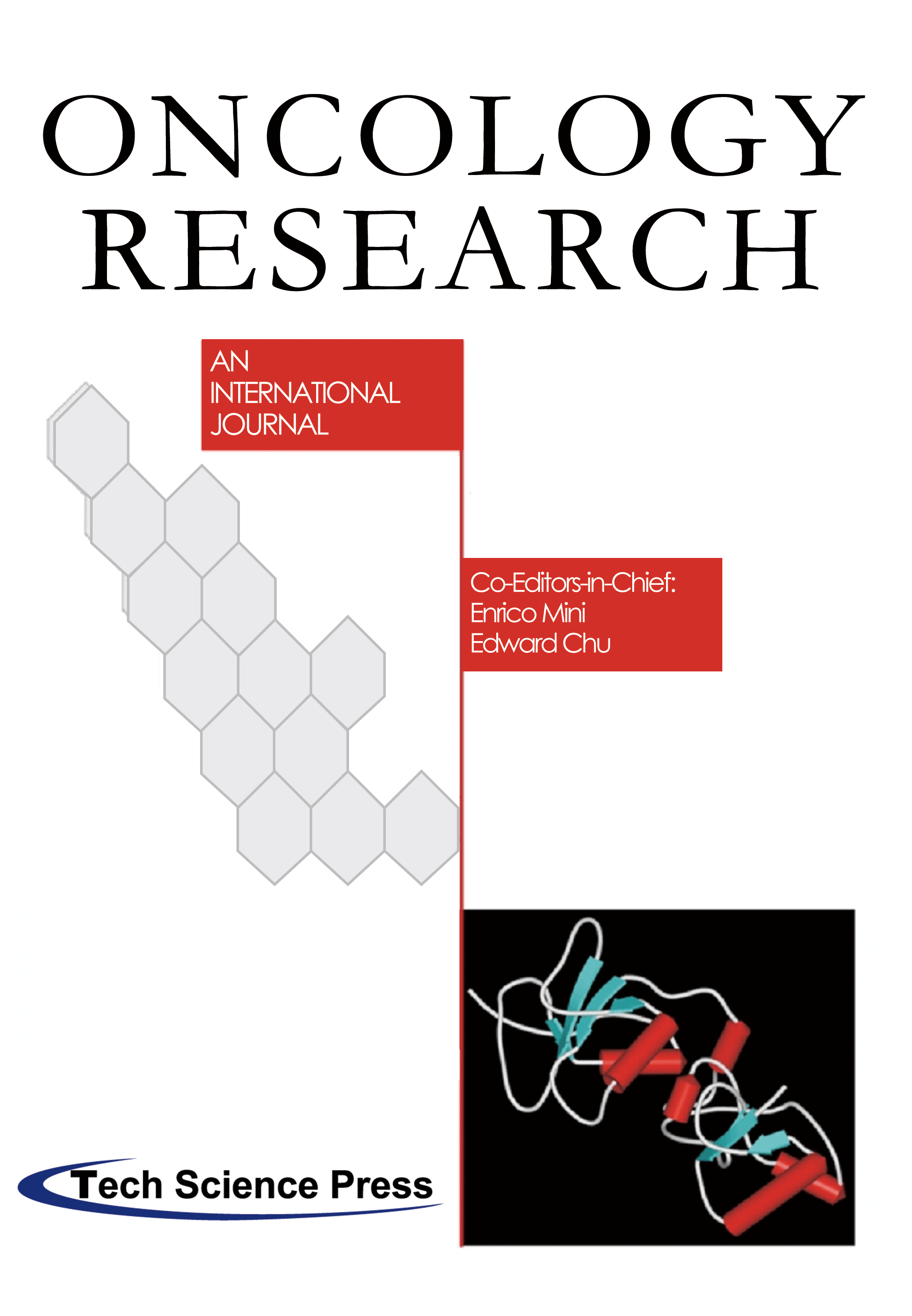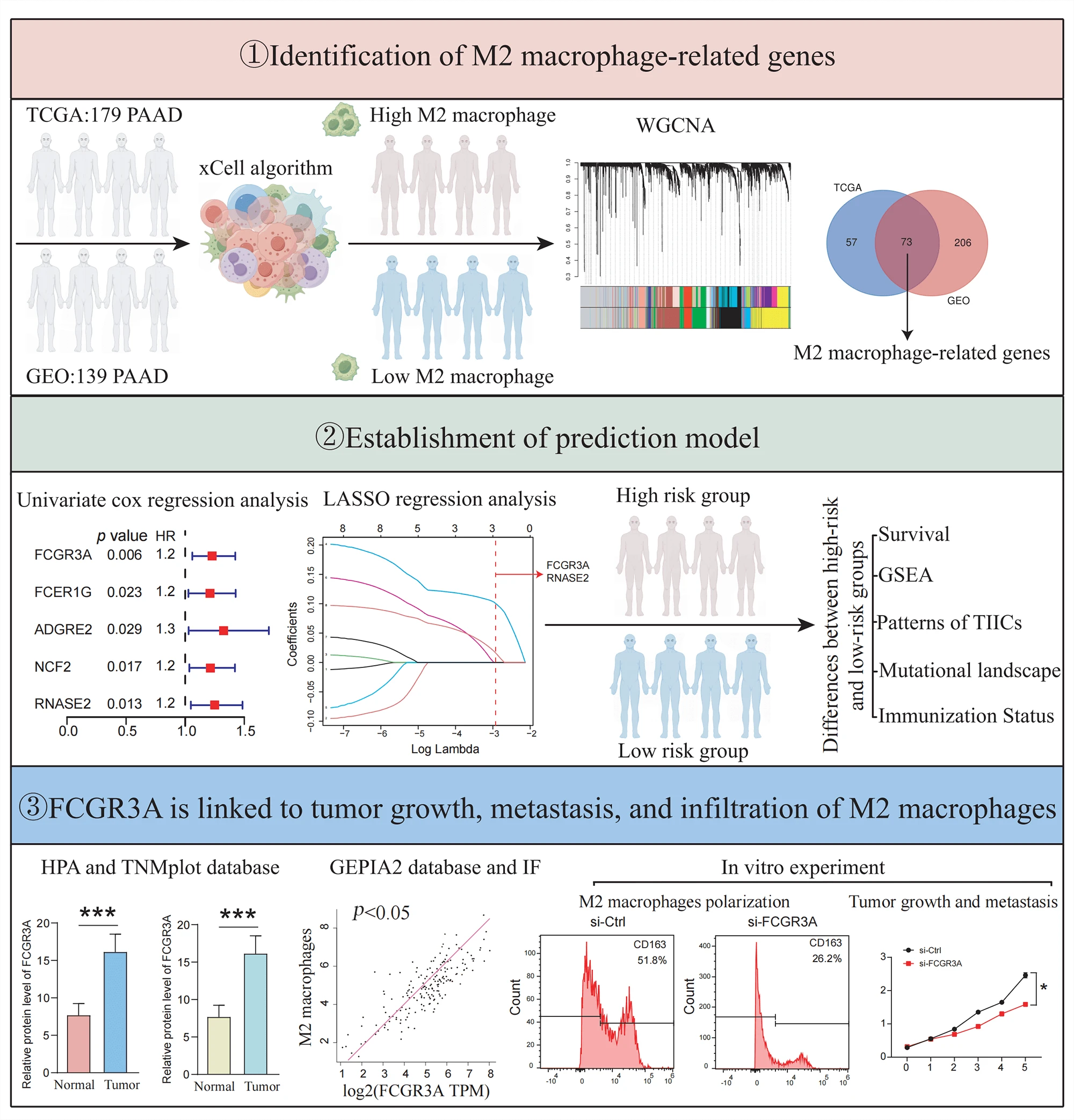
Oncology Research is committed to publishing high-quality, innovative research that is focused on the entire range of basic, translational, and clinical cancer research, with a particular interest in cancer therapeutics, providing a new platform for the understanding, prevention, diagnosis, and treatment of cancer.
Science Citation Index Expanded (Clarivate Analytics): 2023 Impact Factor: 2.0; Scopus CiteScore (Impact per Publication 2023): 4.4; SNIP (Source Normalized Impact per Paper 2023): 0.473; Embase; PubMed Central; MEDLINE; EBSCO; Google Scholar; Proquest; Portico, etc.
 Open Access
Open Access
ARTICLE
Oncology Research, Vol.32, No.12, pp. 1831-1836, 2024, DOI:10.32604/or.2024.052985 - 13 November 2024
Abstract Background: This article aims to present the single-institution outcomes of patients with Fibrolamellar Carcinoma (FLC) treated with liver-directed therapies (LDT). Methods: In this single-center retrospective study, all patients diagnosed with FLC who underwent LDT were identified. Between July 2012 and July 2023, six patients were identified. One patient was excluded due to bleeding. Demographic and clinical parameters were recorded. Complications within 30 days of the LDT were evaluated. Radiological treatment responses at 1, 6, and 12 months were assessed per mRECIST. Results: A total of five patients, which included three females and two males, were reviewed.… More >
 Open Access
Open Access
ARTICLE
Oncology Research, Vol.32, No.12, pp. 1837-1850, 2024, DOI:10.32604/or.2024.056565 - 13 November 2024
(This article belongs to the Special Issue: Advances in Cancer Immunotherapy)
Abstract Objectives: The Kirsten rat sarcoma virus (KRAS) G12D oncogenic mutation poses a significant challenge in treating solid tumors due to the lack of specific and effective therapeutic interventions. This study aims to explore innovative approaches in T cell receptor (TCR) engineering and characterization to target the KRAS G12D7-16 mutation, providing potential strategies for overcoming this therapeutic challenge. Methods: In this innovative study, we engineered and characterized two T cell receptors (TCRs), KDA11-01 and KDA11-02 with high affinity for the KRAS G12D7-16 mutation. These TCRs were isolated from tumor-infiltrating lymphocytes (TILs) derived from tumor tissues of patients More >
 Open Access
Open Access
ARTICLE
Oncology Research, Vol.32, No.12, pp. 1851-1866, 2024, DOI:10.32604/or.2024.055286 - 13 November 2024
(This article belongs to the Special Issue: Novel Biomarkers and Treatment Strategies in Solid Tumor Diagnosis, Progression, and Prognosis)
Abstract Background: Pancreatic ductal adenocarcinoma (PDAC) has a rich and complex tumor immune microenvironment (TIME). M2 macrophages are among the most extensively infiltrated immune cells in the TIME and are necessary for the growth and migration of cancers. However, the mechanisms and targets mediating M2 macrophage infiltration in pancreatic cancer remain elusive. Methods: The M2 macrophage infiltration score of patients was assessed using the xCell algorithm. Using weighted gene co-expression network analysis (WGCNA), module genes associated with M2 macrophages were identified, and a predictive model was designed. The variations in immunological cell patterns, cancer mutations, and… More >
Graphic Abstract

 Open Access
Open Access
ARTICLE
Oncology Research, Vol.32, No.12, pp. 1867-1879, 2024, DOI:10.32604/or.2024.044547 - 13 November 2024
Abstract Background: Drug resistance is the main factor contributing to cancer recurrence and poor prognosis. Exploration of drug resistance-related mechanisms and effective therapeutic targets are the aim of molecular targeted therapy. In our study, the role of long non-coding RNA (lncRNA) AFAP1-AS1 in gemcitabine resistance and related mechanisms were explored in cervical cancer cells. Methods: Gemcitabine-resistant cervical cancer cell lines HT-3-Gem and SW756-Gem were constructed using the gemcitabine concentration gradient method. The overall survival rates and recurrence-free survival rates were evaluated by Kaplan-Meier analysis. The interaction was verified through a Dual-luciferase reporter gene assay and a… More >
Graphic Abstract

 Open Access
Open Access
ARTICLE
Oncology Research, Vol.32, No.12, pp. 1881-1890, 2024, DOI:10.32604/or.2024.048007 - 13 November 2024
Abstract Background: Caffeic acid (CA) is considered a promising phytochemical that has inhibited numerous cancer cell proliferation. Therefore, it is gaining increasing attention due to its safe and pharmacological applications. In this study, we investigated the role of CA in inhibiting the Interleukin-6 (IL-6)/Janus kinase (JAK)/Signal transducer and activator of transcription-3 (STAT-3) mediated suppression of the proliferation signaling in human prostate cancer cells. Materials and Methods: The role of CA in proliferation and colony formation abilities was studied using 3-[4,5-dimethylthiazol-2-yl]-2,5 diphenyl tetrazolium bromide (MTT) assay and colony formation assays. Tumour cell death and cell cycle arrest were… More >
 Open Access
Open Access
ARTICLE
Oncology Research, Vol.32, No.12, pp. 1891-1902, 2024, DOI:10.32604/or.2024.048778 - 13 November 2024
(This article belongs to the Special Issue: New Insights in Drug Resistance of Cancer Therapy: A New Wine in an Old Bottle)
Abstract Background: Polymethoxylated flavones (PMFs) are compounds present in citrus peels and other Rutaceae plants, which exhibit diverse biological activities, including robust antitumor and antioxidant effects. However, the mechanism of PMFs in reversing drug resistance to colon cancer remains unknown. In the present study, we aimed to investigate the potential connection between the aerobic glycolysis-ROS-autophagy signaling axis and the reversal of PTX resistance in colon cancer by PMFs. Methods: MTT Cell viability assay and colony formation assay were used to investigate the effect of PMFs combined with PTX in reversing HCT8/T cell resistance ex vivo; the mRNA… More >
Graphic Abstract

 Open Access
Open Access
ARTICLE
Oncology Research, Vol.32, No.12, pp. 1903-1919, 2024, DOI:10.32604/or.2024.048138 - 13 November 2024
Abstract Background: Dihydrolipoamide S-acetyltransferase (DLAT) is a subunit of the pyruvate dehydrogenase complex (PDC), a rate-limiting enzyme complex, that can participate in either glycolysis or the tricarboxylic acid cycle (TCA). However, the pathogenesis is not fully understood. We aimed to perform a more systematic and comprehensive analysis of DLAT in the occurrence and progression of tumors, and to investigate its function in patients’ prognosis and immunotherapy. Methods: The differential expression, diagnosis, prognosis, genetic and epigenetic alterations, tumor microenvironment, stemness, immune infiltration cells, function enrichment, single-cell analysis, and drug response across cancers were conducted based on multiple computational… More >
Graphic Abstract

 Open Access
Open Access
ARTICLE
Oncology Research, Vol.32, No.12, pp. 1921-1934, 2024, DOI:10.32604/or.2024.046191 - 13 November 2024
(This article belongs to the Special Issue: Multi-Omics Approaches for Precision Medicine)
Abstract Background: The heterogeneity of prognosis and treatment benefits among patients with gliomas is due to tumor microenvironment characteristics. However, biomarkers that reflect microenvironmental characteristics and predict the prognosis of gliomas are limited. Therefore, we aimed to develop a model that can effectively predict prognosis, differentiate microenvironment signatures, and optimize drug selection for patients with glioma. Materials and Methods: The CIBERSORT algorithm, bulk sequencing analysis, and single-cell RNA (scRNA) analysis were employed to identify significant cross-talk genes between M2 macrophages and cancer cells in glioma tissues. A predictive model was constructed based on cross-talk gene expression, and… More >
 Open Access
Open Access
ARTICLE
Oncology Research, Vol.32, No.12, pp. 1935-1948, 2024, DOI:10.32604/or.2024.052244 - 13 November 2024
Abstract Background: Head and neck squamous cell carcinoma (HNSCC) is a prevalent form of cancer globally, with chemoresistance posing a major challenge in treatment outcomes. The efficacy of the commonly used chemotherapeutic agent, cisplatin, is diminished in patients with poor prognoses. Methods: Various bioinformatics databases were utilized to examine Carboxylesterase 1 (CES1) gene expression, clinicopathologic features, patient survival analysis, and gene function. An organoid model of HNSCC was established, along with the induction of drug-resistant HNSCC in the organoid model. CES1 expression was assessed using qRT-PCR and Western Blot, and differential markers were identified through transcriptome… More >
 Open Access
Open Access
ARTICLE
Oncology Research, Vol.32, No.12, pp. 1949-1958, 2024, DOI:10.32604/or.2024.051569 - 13 November 2024
Abstract Background: Glioblastoma remains a highly invasive primary brain malignancy with an undesirable prognosis. Growing evidence has shed light on the importance of microRNAs (miRs), as small non-coding RNAs, in tumor development and progression. The present study leverages the in-silico and in-vitro techniques to investigate the significance of hsa-miR-181a-5p and the underlying hsa-miR-181a-5p-meidated signaling pathway in glioblastoma development. Methods: Bioinformatic studies were performed on GSE158284, GSE108474 (REMBRANDT study), TCGA-GTEx, CCLE, GeneMANIA, Reactome, WikiPathways, KEGG, miRDB, and microT-CDS to identify the significance of hsa-miR-181a-5p and its underlying target. Afterward, the U373 cell line was selected and transfected with… More >